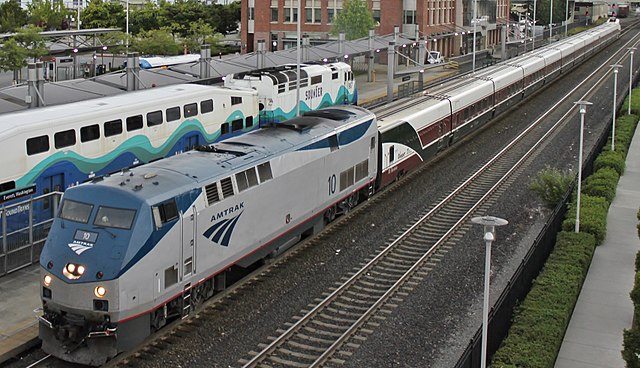
SEATTLE — A conductor injured when a speeding Amtrak train flew off the tracks and onto a Washington state highway last month, killing three and injuring dozens, filed a lawsuit Wednesday claiming the rail company failed to provide a safe work environment.
Garrick Freeman, who was in the front of the train with the engineer at the time of the Dec. 18 crash, suffered multiple broken ribs, a fractured clavicle and serious internal injuries when the train entered a curve too fast near DuPont, Washington, said his lawyer Anthony Petru, who filed the complaint in Pierce County Superior Court.
Another lawsuit was filed Wednesday in King County Superior Court on the behalf of passenger Pennie Cottrell.
Cottrell was aboard when the train entered a sharp curve and derailed, causing Cottrell to suffer multiple broken bones and other injures, according to the complaint.
The train carried 85 passengers and crew members as it made its inaugural run along new 15-mile (24-kilometre) bypass route. Authorities say it was travelling more than double the posted 30 mph (48 kph) speed limit as it entered the curve, causing it to plunge off an overpass and onto a busy interstate.
Federal investigators trying to determine the cause of the wreck say their full investigation could take more than a year.
As a conductor, Freeman of Bellevue, Washington, normally works in the body of the train, but he wanted to familiarize himself with the new route, so was riding in front with the engineer, Petru said. After the crash, Freeman was taken to Harborview Medical Center where he remained until Dec. 30, when he was taken by ambulance to a rehabilitation hospital, where he’s expected to say for about a month.
Freeman’s lawsuit said Amtrak violated the Federal Employers’ Liability Act, which required it to ensure the workplace was free of dangerous conditions. It also said Amtrak failed to train its employees to operate trains safely on the new route.
Amtrak did not immediately respond to a request seeking comment.
Petru said they plan to expand the lawsuit to include all of the public entities involved. The lawsuit seeks unspecified damages.
Cottrell’s lawsuit said Amtrak equipped the train with a Positive Train Control system, which is supposed to help avoid excessive speeds in dangerous situations, but didn’t make the system operable. It provides real-time information to crew members about areas where the train should be slowed and warns the crew about the train’s safe braking distance over reduced-speed areas, the suit said.
“If the engineer does not respond to the ample warnings and on-screen displays, the positive train control system will automatically activate the brakes and safely slow or stop the train,” the suit said. “Amtrak knowingly and intentionally failed to put in place and utilize an operable PTC or similar safety control system,” despite knowing it could prevent derailments, the suit said.
The lawsuit also claimed the engineer lacked the experience and training to operate on that new route.